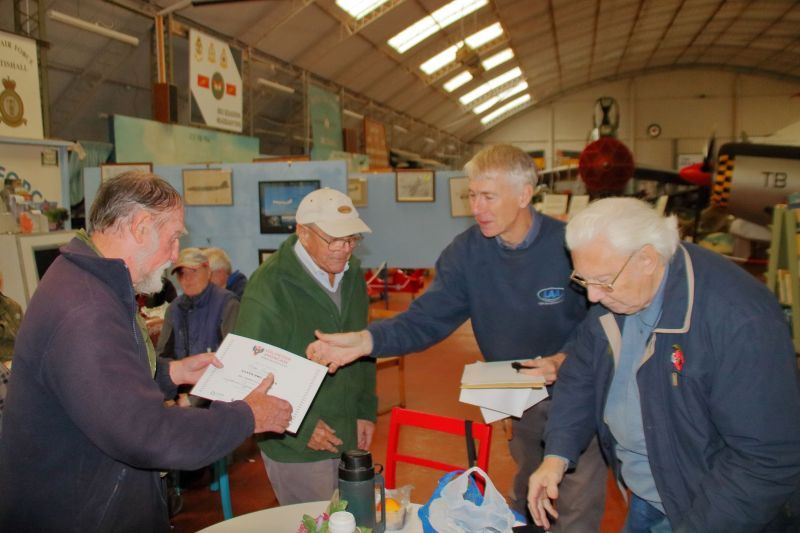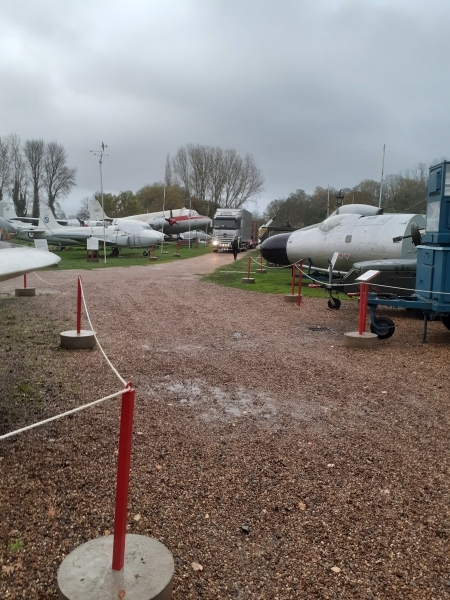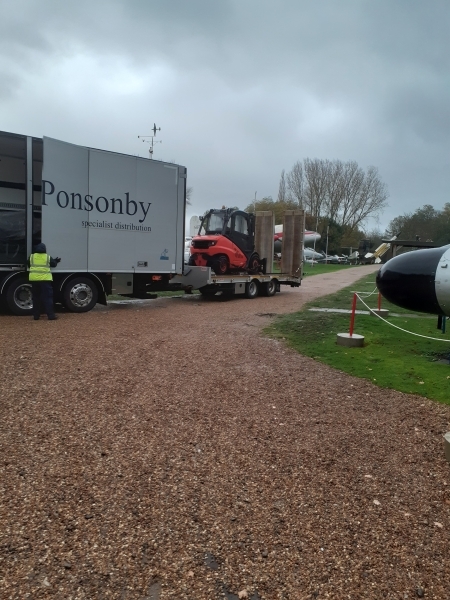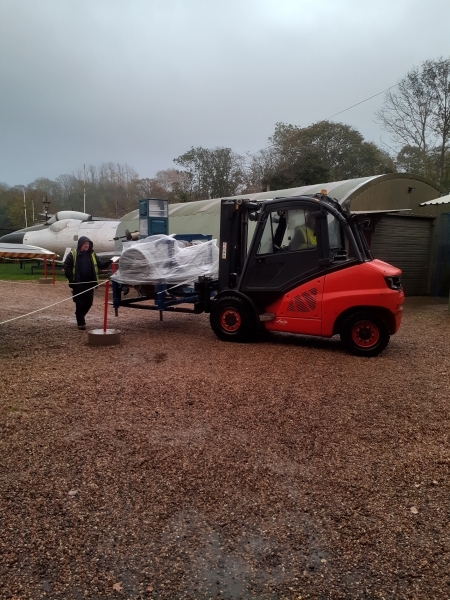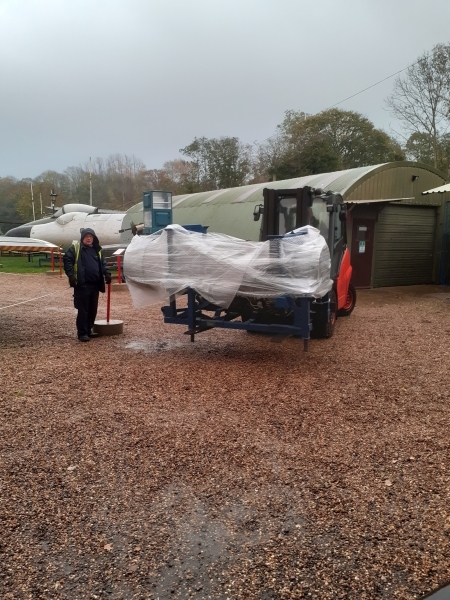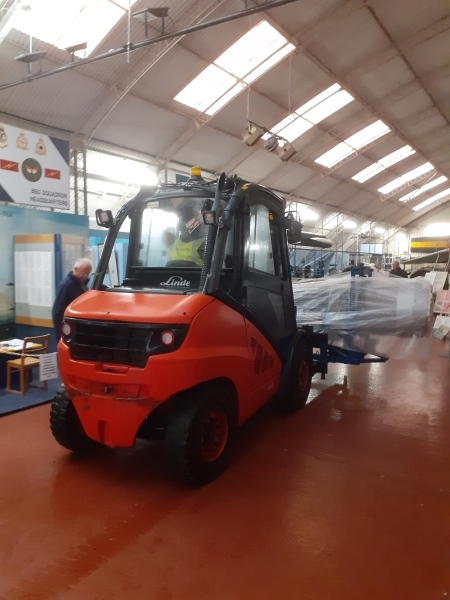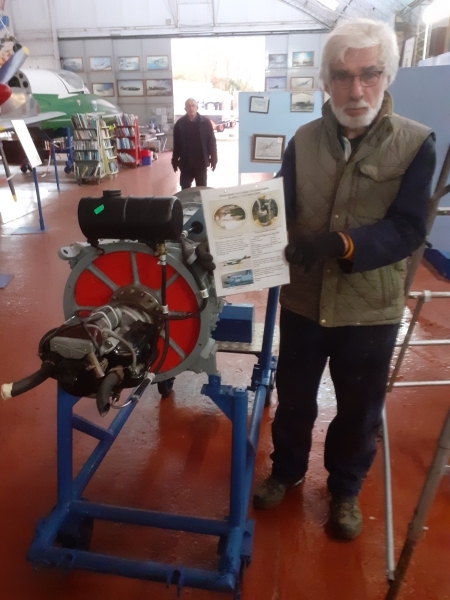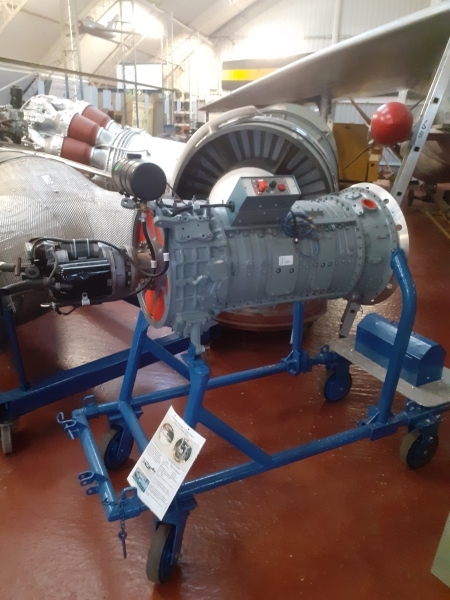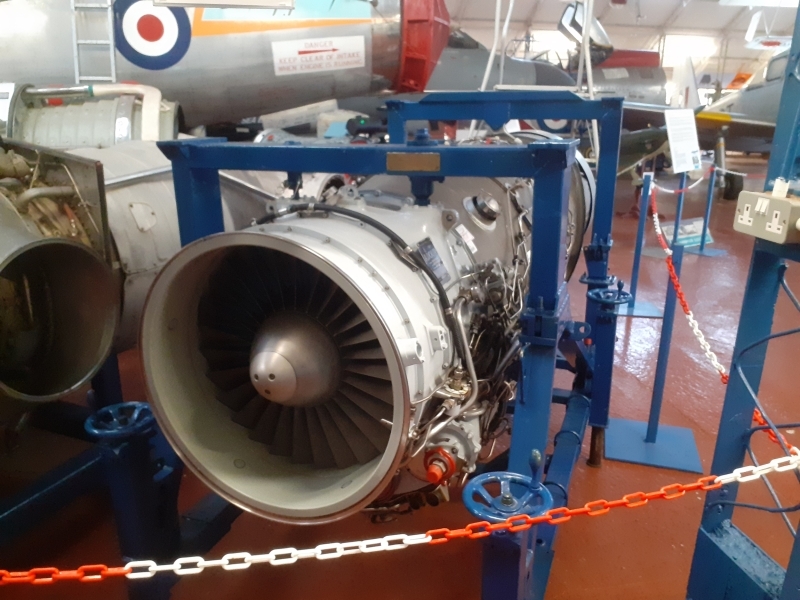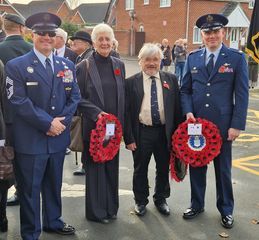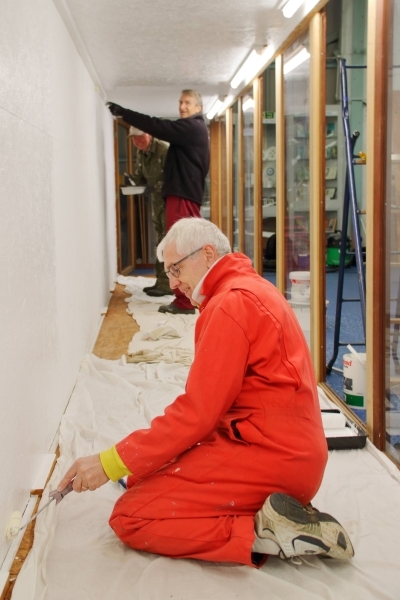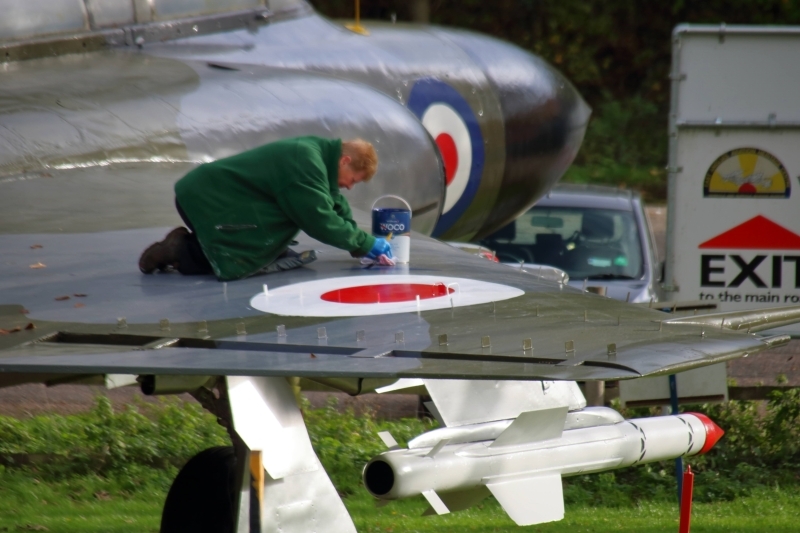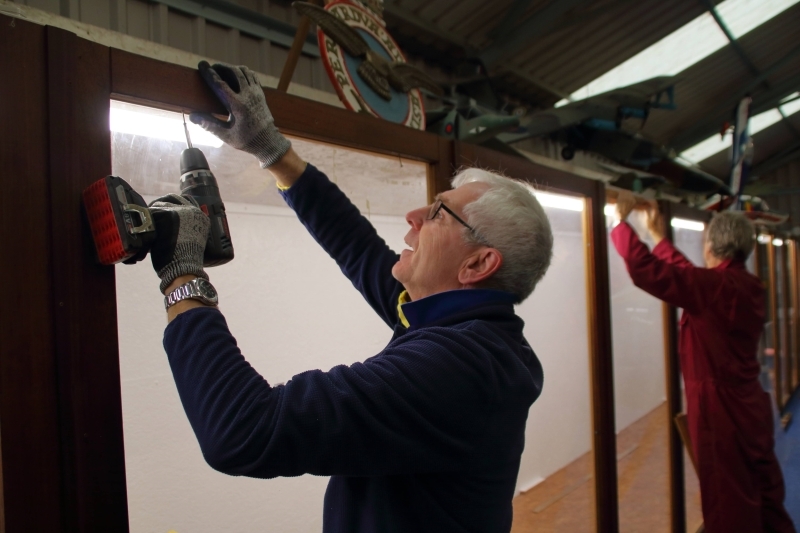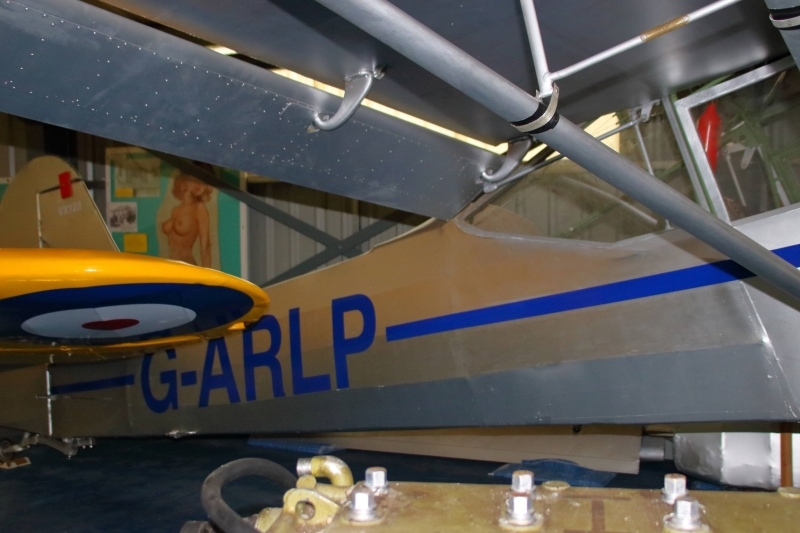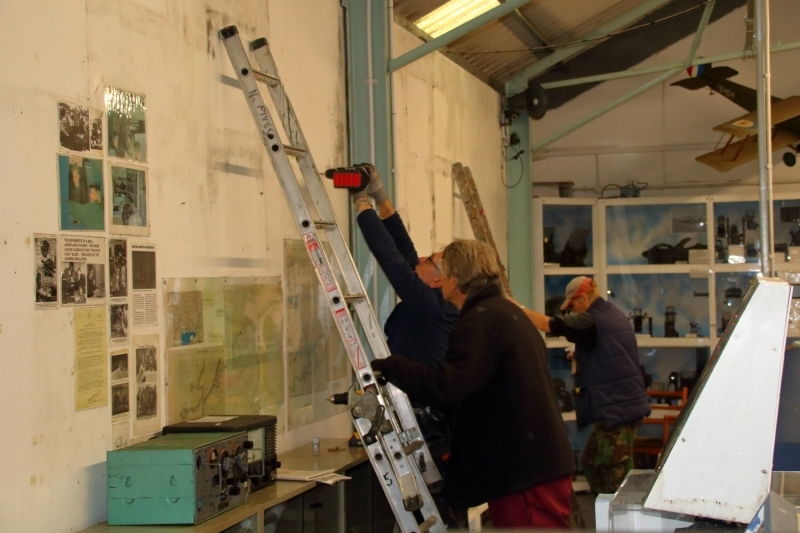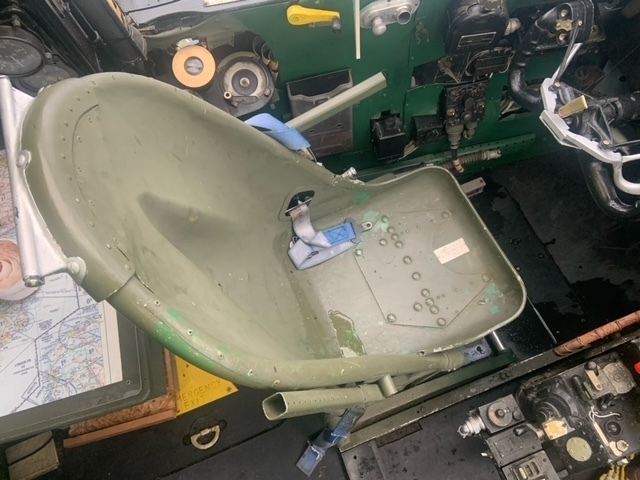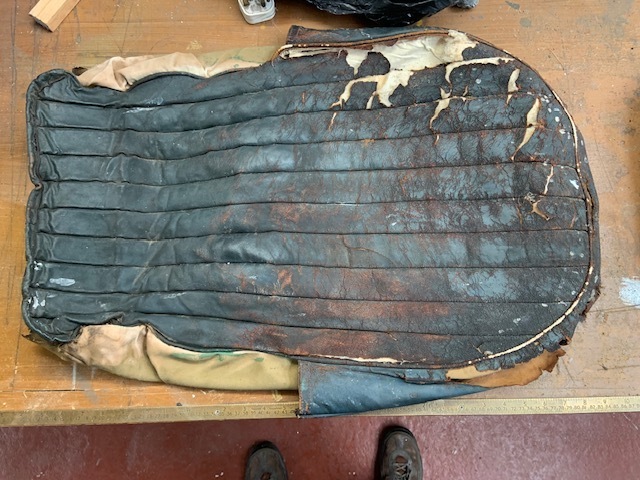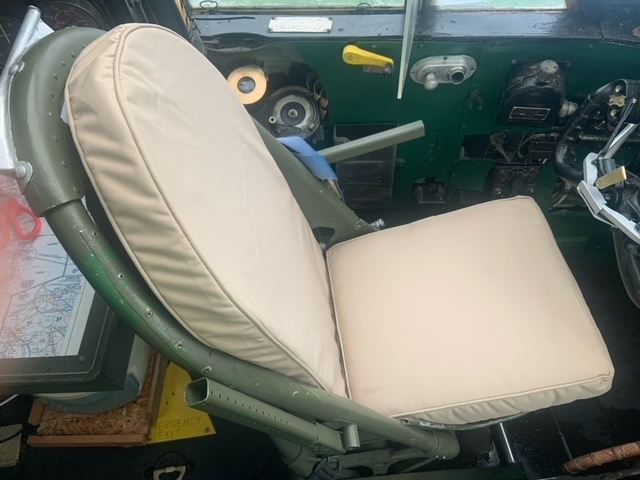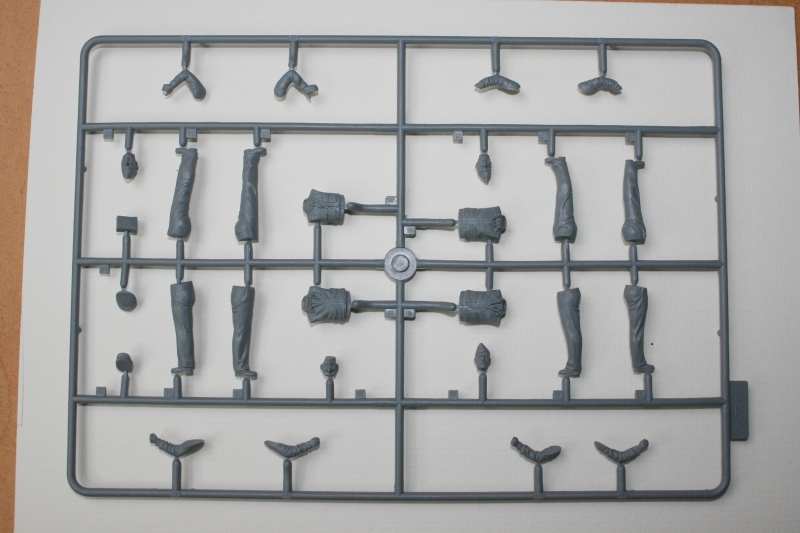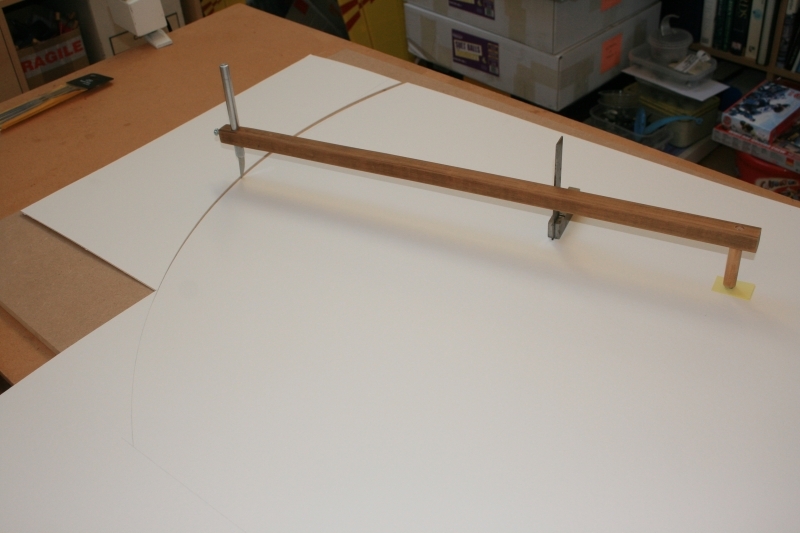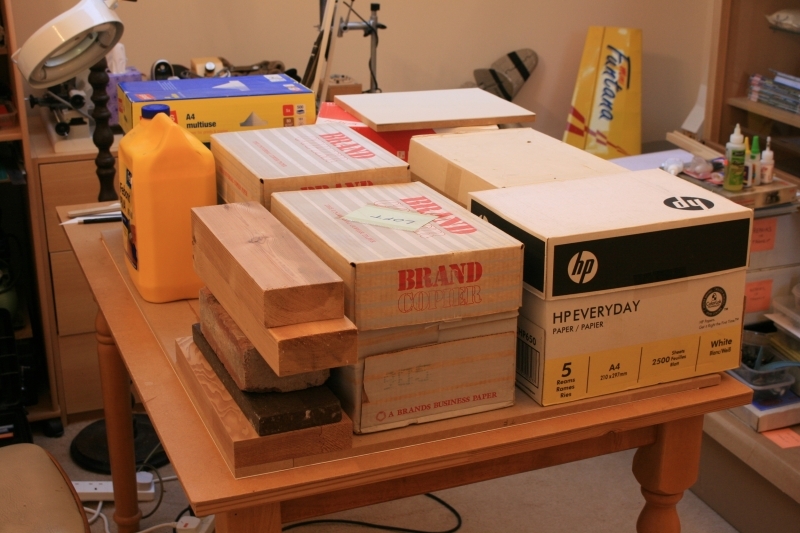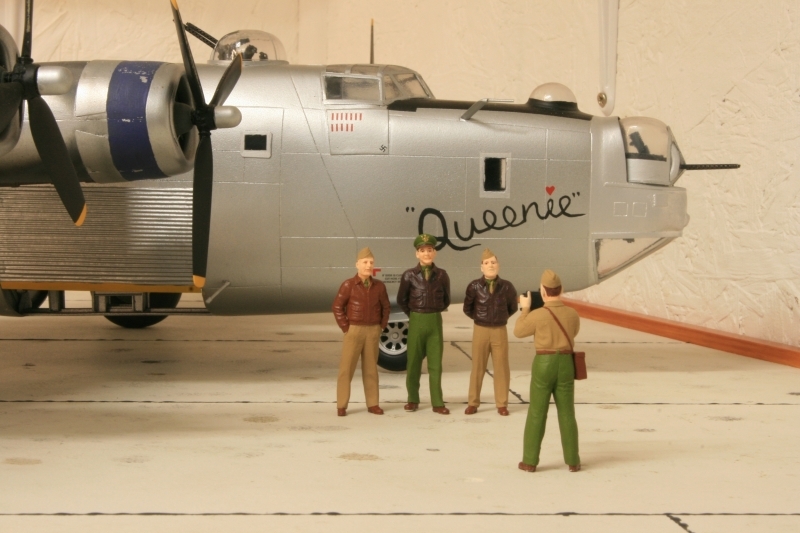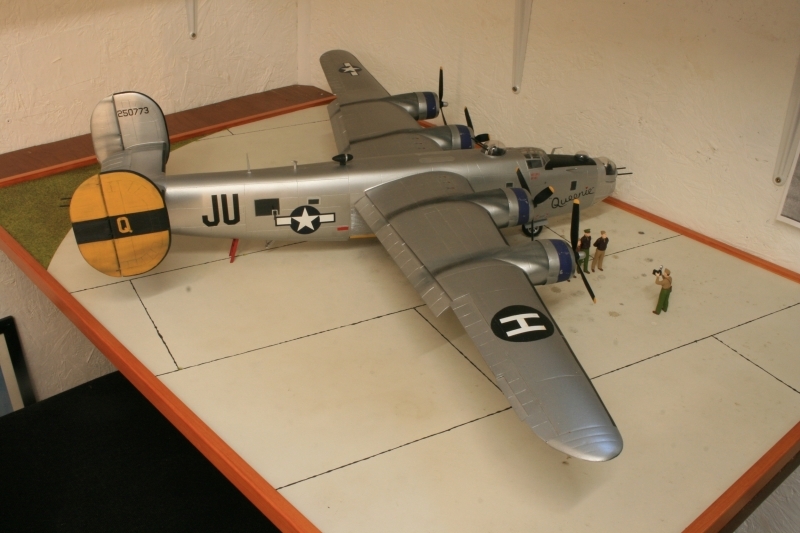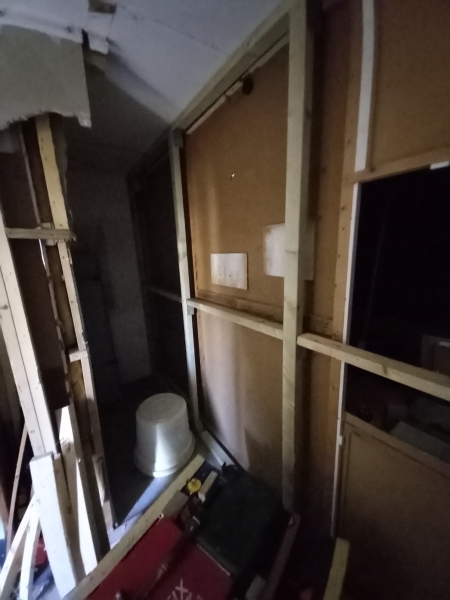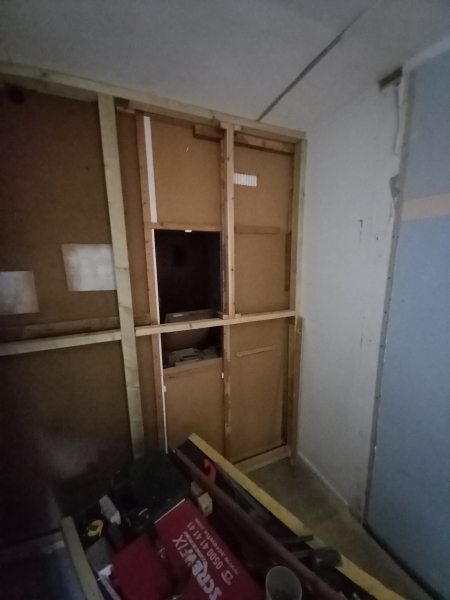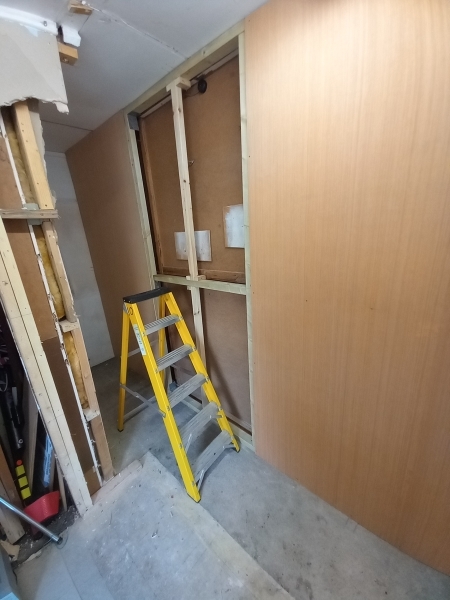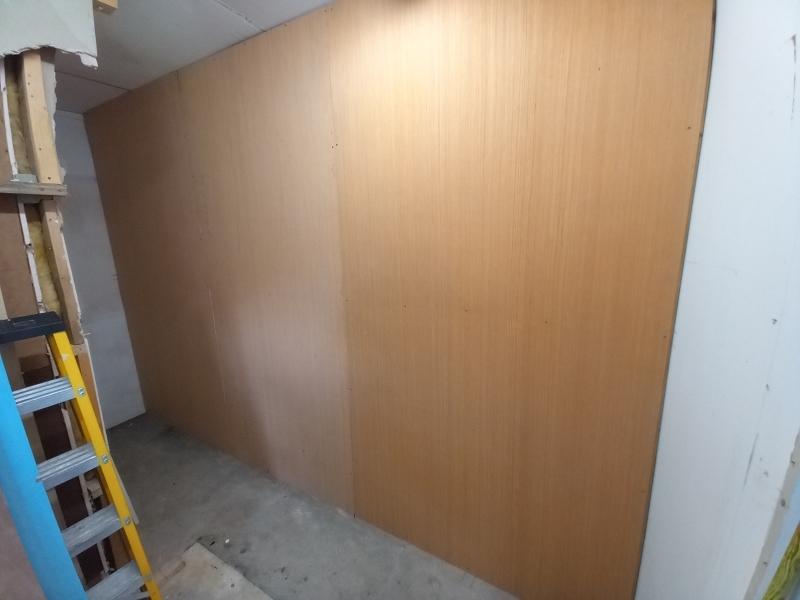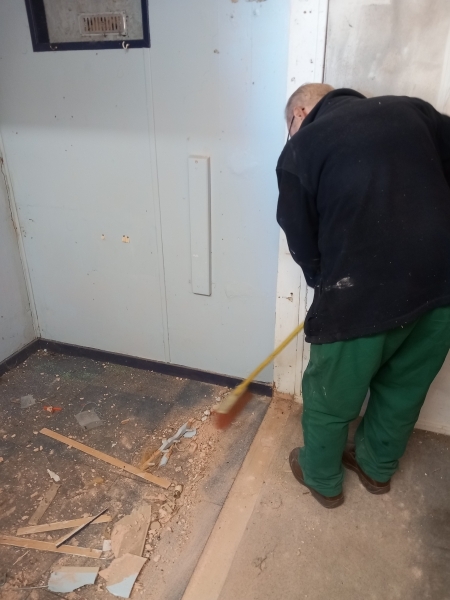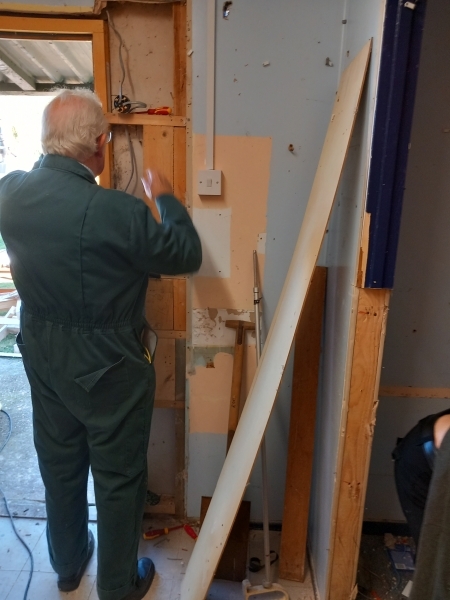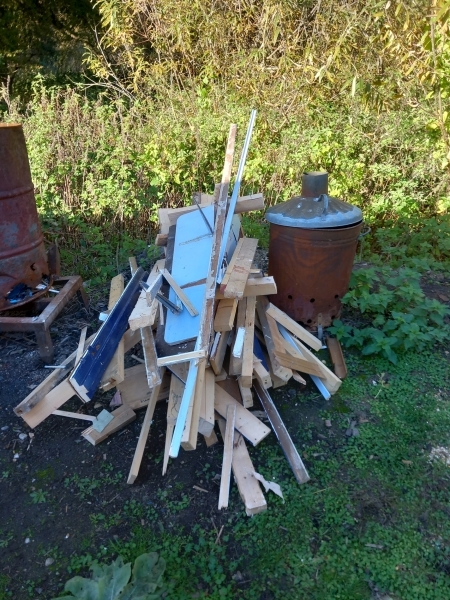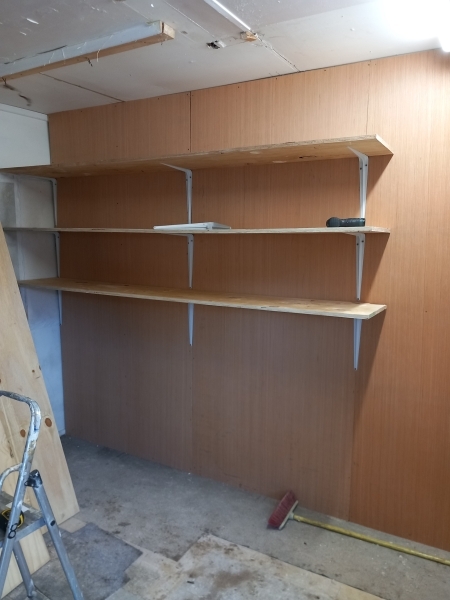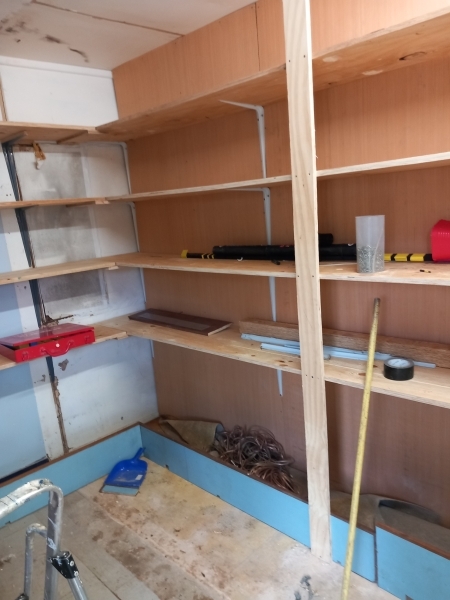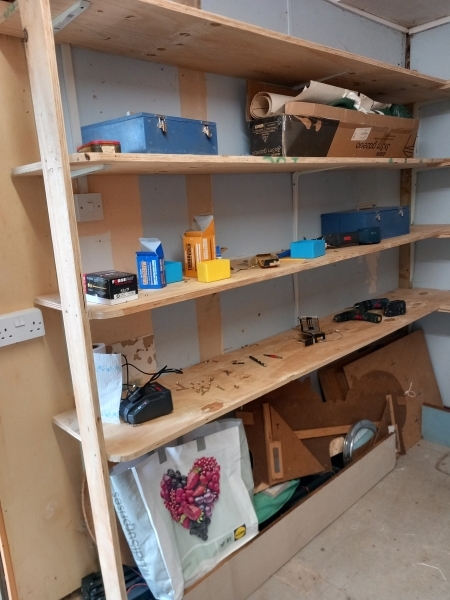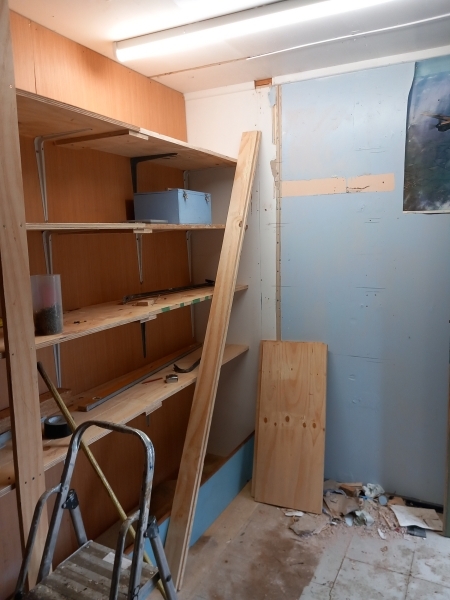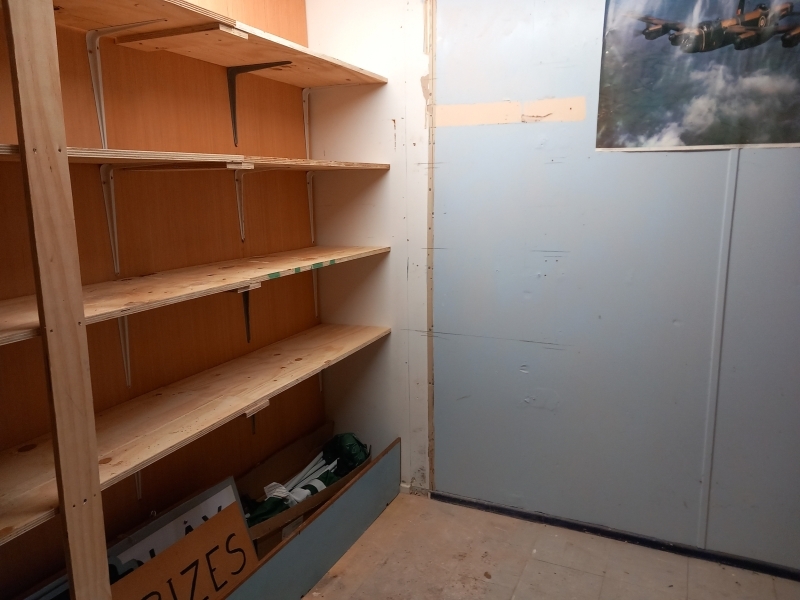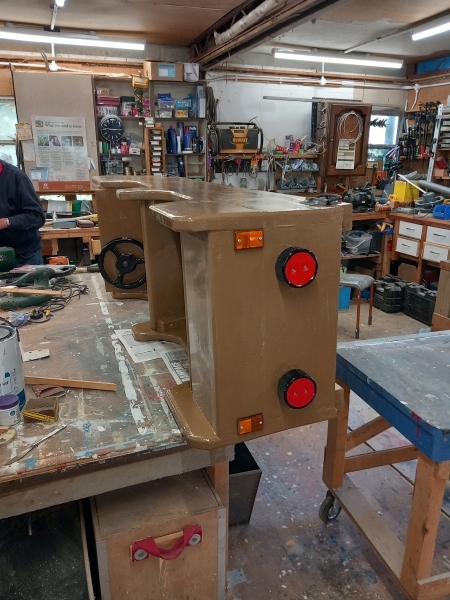NASAM Update as of the 22nd Nov 2022
[joli-toc]
From The Chair
Silver Owls
On Thursday, 10th November I was able to attend the annual SHARE conference, happening for the first time in three years “in person” at The Maltings in Ely. A number of very interesting talks, but the main highlight was the presentation of The Silver Owl awards. These are awarded for 25 or more years of service to a museum. You might recall from the blog that Ivan Last was nominated at the last awards. This time we nominated another five long-serving members of the team, and we are pleased to report that all five were accepted. Over 25 were presented at the conference, but sadly none of our nominees were able to attend.
As with the other museums who had people missing, I was asked to present the awards on a suitable occasion.
We hold monthly volunteer meetings/updates and this was agreed as a suitable occasion. Silver Owls were presented to Ian Hancock, Morris Jackman and David Wright (see Silver Owls 01 and 02). The other two nominees, Lester Curtis and Les Wright are not Tuesday regulars, so we will ensure that their awards are presented at a later date.
(Photos) Silver Owl Awards
Rolls Royce Engines
Sadly the Rolls Royce Heritage Collection have lost their building as it is required by the company for other use. This means that their collection was all going to have to be placed in store. The trustees of the collection decided that in order to keep the collection in the public space, they would loan engines to accredited museums. We requested two engines and were successful with both.
On Tuesday, 15th November, Ponsonby’s transport delivered the engines to the museum. Luckily they had brought a forklift truck which made easy work of getting both from the back of the lorry into the hangar (see Rolls Royce Delivery 01 thru 09). A little juggling with our faithful “skates” soon got both engines into position.
The two engines we received were a Rolls Royce Adour as used in both the Jaguar and Hawk aircraft. The Jaguar was associated with the region for almost the entire length of its service, from 1974 to 2016. The second engine was a Riedel Auxiliary Power Unit. Both are now displayed on “Engine Alley” (see Rolls Royce Deliver 10 and 11 in situ).
Steve B
(Photos) Rolls Royce Engine Delivery
General Updates
This has turned out to be a bit of a bumper edition. We have updates from all around the Museum, some from our regular contributors and a couple from other areas.
First up in this edition are a couple of notes from Steve (above). These cover the presentation of long-service “Silver Owl” awards to members of the museum and the arrival of two Rolls Royce engines that we requested from the Rolls Royce Heritage Collection as it closed its doors
Below in the “From The Museum Teams” section, is a short note from Pam with a photo of the Remembrance Day in Bungay and the laying of wreaths on behalf of the Museum.
Barry again reports on the work of the Paint Team; in the first of his reports, the boys appear to be taking the “warm” option of working inside the hangars and leaving Gwen to persevere in the cold outside. The following week’s update shows them all inside for a change.
Graham has the third instalment of an article from a wartime paper found in the Archives.

Looking to the future, Andy has advised that the Sherwood Ranger aircraft is almost finished and will move to Beccles Airfield at the end of the month. We last saw the Ranger at the 50th Anniversary Day at the Museum when it was rolled out for the public to see. And we now have something to look forward to, as Andy has promised that he will send some photos and an article on the aircraft for a future edition of the Blog.
We had more from the Engineering Workshops in this edition, with John S having taken pity on the visitors by having some comfort added to the Valetta aircraft seating.
Peter W sent in an article on creating a diorama with the B24 ‘Queenie’ model. This has led him to modelling figures which, by his own admission, is not one of his comfort zones. The outcome does look good, and the figures feature in our “Featured Image” at the head of the blog.
Last but by no means least, in this blog, we have a mega update from Michael F in the Chippies Workshop. His updates go back to September and bring us almost up-to-date on the chippies’ ability to drink copious cups of tea, and changes from the internals to buildings through to kiddies’ jeeps. Also, in his last note to me, Michael said that there would be more project information to come next time, with no doubt more tea drinking.
Incidentally, if anyone fancies free cups of tea, coffee and squash in the summer months, we have many opportunities for Volunteers to help out, see “The Repeat Info” at the foot of the blog below.
 Opening Times Nov/Dec
Opening Times Nov/Dec
Please note that the Museum’s opening times have been changed, and we are now open on Wednesdays and Sundays from 1000 until 1500, throughout November and until the 14th of December.
We Will Then Be
Closed for the Winter break … The Museum will then be closed until the 15th of February 2023, apart from two days, Wednesday and Thursday, the 28th and 29th of December.
Enjoy the contents of this edition; there will be more to come in the next edition before we close for the winter break.
Pete S
From The Museum Teams
Remembrance Day in Bungay
On Sunday, the 13th of November Lester and I attended the annual Memorial Day in Bungay, organised by the Royal British Legion. We met two serving members from U.S.A.F. Mildenhall. Lester laid a poppy wreath for the 446th Bomb Group, and I laid one on behalf of the museum.
Always a moving day.
Pam
![]()
Painters Update
8/11/22 – We are Showroom Dummies!
Yes folks, all you fans of 70’s synth pop pioneers Kraftwerk (that might just be you – Ed.) will have instantly recognised this week’s blog title reference. Yes, Showroom Dummies was a track on the imperious 1977 Trans Europe Express LP. What relevance has this got to the paint team blog this week I hear you ask? Well, the boys were tasked with the first ‘inside’ winter job, which was facilitating the move of the aircraft models from the Main Hangar to the BP Hangar cabinet, where the uniforms used to reside.
Last week Cliff cleared out all the uniforms and mannequins ready for a repaint of the cabinet prior to the arrival of models… so we thought. However, upon arrival on Tuesday, it seems that one of the mannequins had been left behind sitting on the floor (see Cabinet Refurb 01 pic)! Anyway, once this obstruction had been removed, the dummies…er boys set about cleaning the cabinet floor and then painting the ceiling and back wall (see Cabinet Refurb 02 pic). To provide access and to allow the cabinet to dry out after painting, the boys removed every other Perspex front panel from the cabinet. During the day, two members of the team who shall remain nameless (Barry and Cliff – Ed.) tried to walk through the Perspex panels still in situ…doh!
Elsewhere, those of greater resilience and experience (i.e. Gwen) battled the elements outside in a race to finish the detailing on the Javelin. By early afternoon Gwen managed to finish the wing top roundels (see Javelin-Repaint-66 pic) just prior to the heavens opening. We await with interest to see whether the paint went off in time or whether the Javelin ends up with some sort of amoeba on each wing!
Over lunch, Barry fielded a request from John S. to ‘tickle the armpit’ of the Auster where the paint had been scuffed during the Auster’s installation in the BP hangar. By the end of the day, the Auster had been duly ‘tickled’, and some new silver paint blended under the cockpit window in to restore the ‘factory’ finish.
15/11/22 – Someone’s got a screw loose!
This week at El Museo, the Paint Team were again deployed on winter jobs. Finishing where they started last week, the boys set about putting the Perspex front panels back into the (repainted) ex-uniforms cabinet in the BP Hangar. After much faffing about with the first panel, it became apparent that there was a very strict order in which the panels had to be dropped in, together with their beading top, bottom and sides. To further complicate matters, several of the original beading screws refused to tighten back up. So, it was loose screws all around. Barry was therefore dispatched to the Chippies shop in order to ‘borrow’ some slightly longer and thicker gauge screws. After an hour or so everything was once again all tight and back in place (see Cabinet Refurb 03 pic).
As a minor deviation, Barry nipped off to see how last week’s ‘armpit tickling’ of the Auster fuselage had gone. Upon inspection, there was no sign of scuffed paint or joins under the rear cockpit window, so it appeared that the paint ‘blending’ had worked, hurrah (see Auster 09 pic).
After the cabinetry work, the team upped sticks and moved into the Link Trainer room, where the white display panels were in need of a clean-up and repaint. Various paintings, photos and maps were removed from the panels (see Link Trainer Room 01 pic) before cleaning could commence. The model cabinets were also cleared, with a bit of help from Malcolm. Some anti mould agent was then applied to the wall panels, and various screw holes were filled, and then sanded back. After lunch, the team put on the first coat of white emulsion on the wall panels (see Link Trainer Room 02 pic). This work was part of Project Move ‘dem Models under the auspices of Peter, who dropped by mid-afternoon and seemed rather taken aback by the amount of progress that had been made in one day!
Next week, Peter will agree the layout of the new wall display with Gary and Steve in pencil, before we painters can move back in and apply a second coat of white emulsion.
Barry
(Photos) Painters Update
![]()
From the Archives
Odd Facts About The War Part III
We continue with articles taken from “The War Illustrated” magazine on October 14th, 1939 – these stories have been taken by the magazine from various press outlets and daily newspapers and offer a slightly cock-eyed view of the outbreak of war. How true they are is in the eye of the beholder…
Graham
![]()
Tracking Down Food Hoarders
Germany is prosecuting a vigorous campaign against food hoarders. The Times correspondent in Rotterdam reports that searchers discovered in one household 80 tins of condensed milk, 70 of which were confiscated. For some months it has been practically impossible to buy condensed milk in Germany.
Overtime Not Counted
Goering’s War Cabinet has abolished the regulations governing adult labour conditions. The working day for men over 16 and for all women has now been extended to 10 hours, although the working week will not exceed 56 hours.
Air Raid Modes
Suggestions for women’s night raid wear include slacks and a sweater to pull over one’s pyjamas, and a floor-length ” house-gown with long zipp fastener. Some smart lines in gas-mask containers have been seen: black velvet cases piped in colour, with a pocket holding purse, powder and lipstick; and one in beige material to match the wearer’s suit, and held by a broad apple-green ribbon.
Hitler in Who’s Who
From Wilhelmstrasse 77, Berlin W.8, as he unpretentiously describes his Chancellery in the publication, Hitler sent to the editor of Who’s Who a revised proof a few weeks ago for the 1940 edition. In spite of the war, he will continue to occupy 30 lines in that work of reference. That is four lines more than Mr. Chamberlain takes.
Ribbentrop in Who’s Who
Both Goering and Ribbentrop will keep the Fuehrer company. The latter made several additions to the proof sent to him in June. He added to his credit the annexations of Bohemia, Moravia and Memel. While he may regret having returned the article too early to include the Soviet Pact among his achievements, he can congratulate himself on having had the foresight to omit any reference to the anti-Comintern Pact in the current issue. (Daily Telegraph)
![]()
Valetta Gets Comfortable
From the Engineering Workshops
For many years, the Valetta has lacked proper seating cushions for the pilot and copilot, and visitors had to sit uncomfortably in a metal bucket with the front ridge digging into the underside of their legs (see Valetta Seats Before) – children were at a particular disadvantage. To recreate the original leather seats was too expensive (see Valetta Seats Original), so we had some replacements made from synthetic material. It’s not an original fit but does the job (see Valetta Seats After).
John S
(Photos) Valetta Gets Comfortable
![]()
Modellers Den Update
Little green men and heads on stakes
Readers with a long memory will recall that back in February, we were planning to provide our huge model B24 ‘Queenie’ in the refurbished Modeller’s Den with a crew, stood on a base representing one of the Flixton airfield ‘panhandle’ hard-standings, now long gone.
Well, a summer of stewarding on public days has come to a close for me and at long last three crew and the Station photographer with his 1942 Speed Graphic camera are in place on their new diorama. Currently, in the Modellers Den, it is planned to be moving to its logical home in the 446th Bomb Group museum before we reopen in Spring 2023.
Figure modelling definitely isn’t one of my comfort zones, but with guidance from a friend and frequent reference to Shep Paine’s book ‘How to Build Dioramas’ I gave it a go. This was also my introduction to acrylic paints and acrylic joint filler.
Each sub assembly was drilled to take a cocktail stick for ease of painting. The MDF base was fitted with a sheet of picture mounting board to take the concrete expansion joint engraving and paint. To ensure that the surrounding model grass sheet had the same curvature I made a bespoke compass/cutter. With the concrete surface bonded to the base it was time to start weathering. I knew all those boxes of old aviation magazines would come in handy eventually.
Based on photos, the bare concrete was toned down with plenty of oil and fuel stains under the aircraft. That wasn’t made any easier by working at home while the model was at Flixton. Paine’s idea to apply thick acrylic for the raised bitumen worked well, with a fine cyno nozzle taped to a handy dog medicine syringe.
With the photos taken (F30, natural light on a tripod), one unfortunate crew member, temporarily assembled, has had his legs and head snapped off to go back on cocktail sticks as part of a simple diorama in the Den showing how it was made.
Big relief that’s done, now back to more manageable subjects…..
Peter W
(Photos) B24 Queenie Diorama
![]()
Chippies Update
While the Winter projects have been planned to start moves and changes at the end of October, the Chippies work on them started in the last week of September. Steve B has long had a plan to re-use the space known as the ROC Store. This is a room hiding behind the ROC displays and was also known as Ivan L’s cupboard. Something many people probably didn’t appreciate was that there was a little cubbyhole in there that things got stashed away in. There was also a sub-room that was formerly a toilet and was full of more stored items. What appeared to be a small space could be made into a reasonably spacious storeroom, just under 12 feet by 8 feet (about 3.5m by 2.4m). All that needed to happen was all the accumulated junk, and a couple of walls needed removing.
The reason this job jumped to the front of the list as a Winter project is Steve’s plan this year uses the ROC Store as a Temporary Store. By this, he means as displays this winter are removed from their current location, the exhibits move to this storeroom on a temporary basis and then moved to their new home. Nothing should be stored in this room permanently. Well, apart from some things that were already in the room.
Ash and Ivor opened the batting in the last week of September by demolishing the stud wall, which created the cubbyhole. Ash decided that it needed a new stud wall against the back wall of the ROC displays as that back wall wouldn’t be strong enough to support the size of shelving Steve wanted in there. So, after the delivery of a load of timber and ply, he commenced building the wall. Unfortunately, he then went down with a nasty bout of flu (get your flu jabs if Ash’s experience is anything to go by).
Fortunately, Michael F returned from his sojourn in France and could take over. The Leckies – Bryan, David and Peter – turned up to say they had been asked to provide better lighting, which the room certainly needed. So Michael retired to the workshop for further tea, to plan the work and work out how much shelving he needed so Dave H could place an order. The Leckies started their work re-lighting the room, if only they could work out the wiring, which, in their words, was terribly complicated (or words to that effect!). But by the end of the day, they had a new strip light working and promised to be back next week to sort out the remainder.
So Thursday (13th October if anyone wants to keep track), Michael completed the stud wall framing that Ash had started, assisted by Dave H, and then put up the plywood to complete the wall. Another step complete.
Now the original plan called for the shelves to be put up on the new wall and the things being kept from the old ROC store to be put on them while the sub-room was demolished. But the size of the shelves specified meant the gap between the new wall and the sub-room was too tight to work in – about 4 inches (100mm) when the shelves were up. So Dave and Michael decided the sub-room had to come down. But first, it had to be cleared.
The following Tuesday, the Leckies returned, wanting to deal with the lighting socket in the sub-room. Hearing the plan to demolish the sub-room, they set to with Michael and Morris to clear it all out, and even Dave H turned up to “supervise”. Various treasures, long forgotten about, were found, including a large painting of Norwich and a ROC theodolite and tripod, used to observe nuclear explosions in the event of war (!). Other items rescued included games Ivan used to organize for the Family Fun Day. But much needed disposing of as it was well past its prime. But by lunchtime, there was enough room for the Leckies to do their stuff, and the Chippies left them to it and retired to the workshop for lunch and a cuppa tea.
After lunch, we had a smashing time! A sabre saw, and heavy hammers soon made short work of the two plaster and stud walls. The Museum’s dustbins were soon near overflowing with destroyed walls and unwanted junk, and more needed to go in. The remainder was put back in the room, and we planned to finish the rest after the regular visit by the dustmen. Oh the fickle British weather. Thursday, it chucked it down with rain. As we couldn’t take anything out of the Storeroom, all Dave and Michael could do was watch the downpour and drink endless cups of tea. A short break in the rain allowed us to remove the last of the rubble, but that was all we did that day. But at least the room was ready for us to start on the shelves the next Tuesday.
The next Tuesday, another wanderer returned – Dave D from a walking sojourn in Spain. Seeing how short-staffed we were, he volunteered to help Michael with building the shelves. Shockingly, it all came together as planned. Betts, our wood suppliers, had delivered the shelving plywood sliced into the sizes we wanted, so we saved lots of time and knew that each sheet had straight edges. Dave H had bought 30 heavy-duty shelving brackets. The weather was fine, so we could empty the room. The longest wall, the new wall, had its shelving in place when we finished that afternoon. We were, for the first time, able to get everything back in the room without resorting to callisthenics.
Thursday, now assisted by Les W as well, Michael and Dave completed the shelving on the remaining two walls. Ivor, on a visit, suggested that it wouldn’t just be “lightweight” model aircraft and could we strengthen the shelves. So as we had a slight over order of shelving (because we didn’t shelve the fourth wall), we sliced a plywood length in three and used them as verticals at strategic points. Les W screwed the shelves taken down from the old storeroom along the floors below the shelves. These now act as kickboards and prevent things stored under the shelves spreading across the floors – maybe it will be kept tidy?
Finally, the following Tuesday (1st November) Ash returned to see how his project had turned out. All in all, this was a job that required the help of a number of Chippies and Leckies, who all turned their hands to doing what needed to be done (see ROC Building Mods 01 thru 18).
Just to complete the picture for October, Dave H and Morris, when not helping out on the ROC Store, finished off the new children’s Jeep, adding the cosmetics that make it look more real – lights, radiator grills and painting on the wheels. Now it is parked in the workshop, waiting for a winter home before going outside next year (see Childrens Jeep 13 thru 16).
Michael F
(Photos) Chippies Update
The Repeat Info
The repeat information is still here I’m afraid, and I make no apologies for keeping his section in our blog. We are a charitable organisation relying on monies from the public to keep us going. Any help we receive is gratefully accepted and enables the museum to continue in our mission “To conserve, preserve and promote the history of aviation in East Anglia, whilst providing a fun, family-friendly and interactive museum, promoting education and remembrance of the events of the past“.
Are you thinking of helping ??
 We obtain most of our finances by donations and by membership fees. We save money by having a dedicated group of volunteers that keep the museum and the exhibits both manned and maintained. We hope therefore a few people may consider helping in the ways below.
We obtain most of our finances by donations and by membership fees. We save money by having a dedicated group of volunteers that keep the museum and the exhibits both manned and maintained. We hope therefore a few people may consider helping in the ways below.
There are three easy ways to help: Help by becoming a Museum Member, also by Volunteering to help at the museum, or by Donating to assist in our running costs. Please click on the appropriate button below to access the appropriate information:
Keep Up To Date
![]() To keep up to date with further information, please keep an eye on our Social Media (see the Social Media buttons at the foot of this blog) or click on the button below to be notified by email of any upcoming changes by seeing the latest blog.
To keep up to date with further information, please keep an eye on our Social Media (see the Social Media buttons at the foot of this blog) or click on the button below to be notified by email of any upcoming changes by seeing the latest blog.

